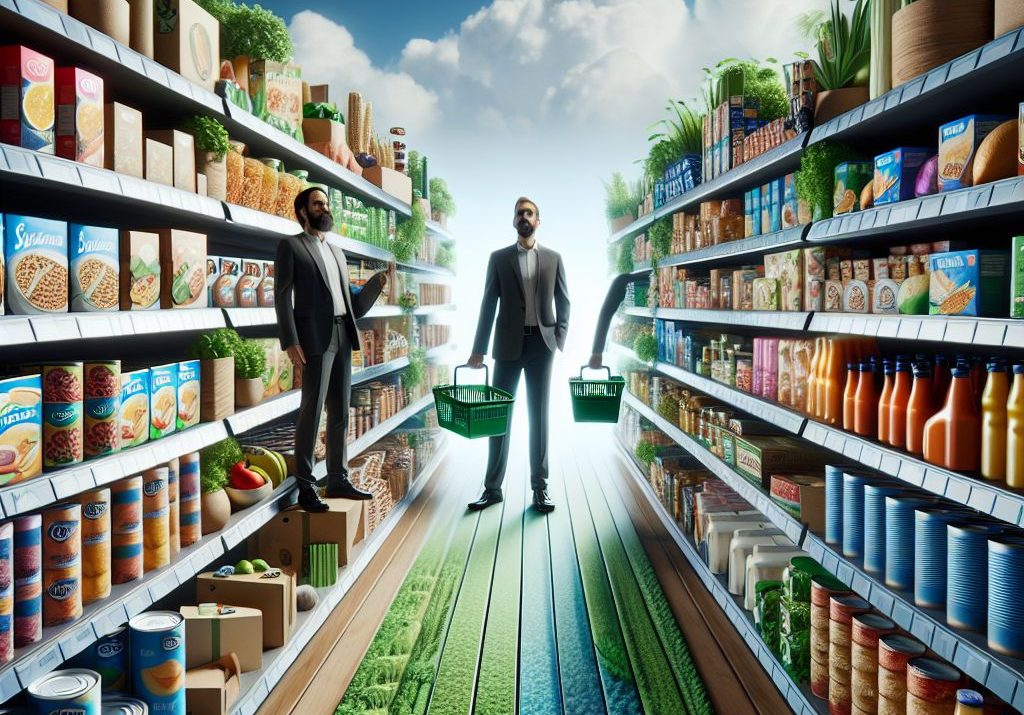Table of Contents
- Introduction
- The Imperative of Sustainable Packaging
- Benefits of Sustainable Packaging
- Real-World Applications
- Challenges and Opportunities
- The Future of Sustainable Packaging
Introduction
The grocery aisle, a hub of food and beverage consumption, is a prime arena for sustainable innovation. With growing environmental concerns, the industry is urgently seeking sustainable packaging solutions. This shift is not only an ethical responsibility for companies but a response to consumer demand, regulatory pressures, and potential cost savings. This article will delve into greener alternatives, the benefits of sustainable packaging, and real-world applications.
• The urgent need for sustainable packaging solutions in the food and beverage industry.
• The benefits and real-world applications of eco-friendly packaging.
The Imperative of Sustainable Packaging
As society grapples with the fallout of excessive waste, the need for sustainable packaging has never been more pressing. Traditional packaging methods have caused significant harm, contributing to landfills and polluting oceans. The food and beverage industry, a significant contributor to packaging waste, must lead the charge in adopting eco-friendly solutions. By embracing green alternatives, companies can reduce their environmental footprint while meeting the rising demand for sustainable products.Top 5 Customer Service Software Solutions for Small Businesses
Benefits of Sustainable Packaging
Adopting sustainable packaging offers a myriad of benefits. First, it reduces the impact on the environment by using materials that are recyclable, compostable or biodegradable. Second, it appeals to increasingly eco-conscious consumers who prefer brands that align with their values. Additionally, it can lead to cost savings in the long run, as resources are used more efficiently. Moreover, companies adopting such practices often see enhanced brand reputation and customer loyalty.Boost Your Online Presence with SEO-Friendly CWS for E-Commerce Success
Real-World Applications
Several companies have begun implementing sustainable packaging initiatives. Coca-Cola, for instance, has pledged to make all its packaging 100% recyclable by 2025. Meanwhile, Nestlé is investing in research to develop biodegradable and compostable packaging solutions. These examples underscore the industry’s commitment to sustainability and offer a blueprint for other companies to follow. However, it is essential to continue pushing the boundaries and innovating in this space.Tailored for You: A Guide to Customizable and User-Friendly Content Writing Software
Challenges and Opportunities
While the shift towards sustainable packaging presents a promising path, it is not without challenges. These include the higher costs associated with eco-friendly materials and the need for robust recycling infrastructure. However, these challenges also present opportunities. Companies can collaborate with governments and other organizations to improve recycling systems and invest in research and development to drive down costs and discover novel packaging solutions. In this way, the journey towards sustainable packaging can stimulate innovation and collaboration.
The Future of Sustainable Packaging
The future of the food and beverage industry lies in sustainable packaging. As consumers, regulators, and companies themselves push for greener solutions, we can expect to see significant advancements in this field. The integration of technology, such as bioplastics and edible packaging, will further revolutionize the sector. As we move forward, it is crucial to keep sustainability at the forefront of our actions and decisions, ensuring a healthier and greener future for all.
Innovation and sustainability are the twin engines propelling us towards a future defined by resilience, adaptability and prosperity. Advancements in clean energy, recycling technology and sustainable agriculture are just a few examples of how we are leveraging innovation to preserve our planet. Yet, the journey towards sustainability is not a solo endeavor. It necessitates collective action and shared responsibility, not just from governments and corporations, but also from individuals. Every action—no matter how small—can contribute to a larger, positive impact on our environment.
While the path to a sustainable future may be challenging, the rewards are immeasurable. Beyond the immediate benefits of cleaner air, safer water and healthier ecosystems, sustainability also brings economic opportunities. Green jobs, sustainable tourism, and the growth of renewable energy sectors are opening new avenues for economic development and prosperity. Moreover, sustainable practices can foster social equity, ensuring that the benefits of development are shared by all sections of society.
Yet, despite the promising potential of sustainability, there are still obstacles to overcome. Lack of awareness, resistance to change, and financial constraints are some of the common challenges that must be addressed. Education and advocacy can play a key role in overcoming these barriers. By promoting an understanding of the importance of sustainability and the tangible benefits it offers, we can inspire individuals, businesses and governments to adopt more sustainable practices and policies.
In conclusion, the journey towards sustainability is a shared one, requiring collective effort and commitment. As we navigate this path, we must remember that it is not just about preserving the environment, but also about creating a world that is equitable, resilient and prosperous for all. Indeed, the vision of sustainability is much more than a distant goal; it is a blueprint for a better and more inclusive future.







